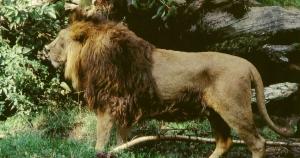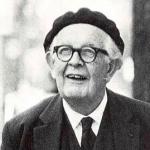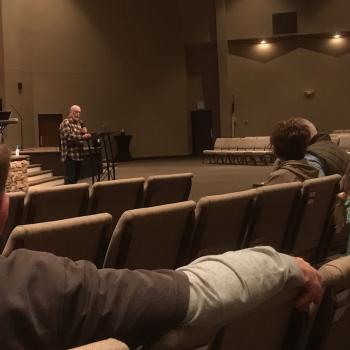Now we turn our attention to the centerpiece of the Narnia series, The Stone Table.
We’re continuing this unique series on C.S. Lewis, birthed out of some seminary research by Rev. Vernell Ingle, Faculty Chair at Messenger College.
Most importantly, he has read C.S. Lewis books to us children and his grandchildren over the years, truly making them part of our tribal spiritual formation, if you will.
Each week, we’re offering a writing and some type of audio/visual piece that runs a parallel track. Take some time to explore the writings so far.[1]
The Stone Table
The Chronicles of Narnia is a wonderful, magical, mystical, fantastic adventure series written for children, but certainly enjoyed by adults as well. In the movie Shadowlands, colleagues criticize and jest with Lewis for being preoccupied with writing children’s fantasy tales.
There are seven books to this series. They all center around a certain family in which the brothers, sisters, and cousins enter, inadvertently, a new land-dimension known as Narnia. Lewis wittingly interweaves into his stories an analogy of Biblical truth.
The hero of the series is a strong, powerful, majestic, fearful, and yet tender lion known as Aslan
 Jochen Ackermann | Panthera leo persica | Nurnberg | 2004
Jochen Ackermann | Panthera leo persica | Nurnberg | 2004
Aslan appears and disappears at will throughout the series. He always has a profound and positive effect on those who follow Him, and His enemies have no power against Him.
In the first book, The Lion, the Witch and the Wardrobe, Lewis sets the tone for the series of Narnia. The children enter the world of Narnia, inadvertently, through the door of a wardrobe. Immediately they realize that there are good people (or talking creatures) and evil ones. Aslan is good. There are rumors that He has returned to break the winter spell of the White Witch.
The curse of the White Witch is that it is always winter but it never gets to be Christmas, until Aslan returns. The winter dissipates. Christmas arrives. But one of the four children has come under the influence of the evil witch and becomes entrapped. The only way to break that spell is for someone who is worthy to surrender to the White Witch.
A significant meeting is arranged at the Stone Table
Aslan is there, and the four children, along with all of the good creatures. The White Witch is there with all of her evil hordes. She is there to claim the rights over Edmund, who has come under her influence.
The White Witch and Aslan confer. Everyone expected a battle between the two, that Aslan would obviously gain the victory, and all the wrong would be set right. But much to everyone’s dismay, Aslan surrenders to the White Witch. She has her hordes tie Him to the Stone Table. His mane is shorn away. He ends up looking like a huge helpless rat.
Then Aslan’s followers are horrified when the knife is plunged into His chest and He is murdered by the witch
The following day a strange magic takes place as the two sisters, Lucy and Susan, approach the Stone Table:
The rising of the sun had made everything look so different – all the colours and shadows were changed – that for a moment they didn’t see the important thing. Then they did. The Stone Table was broken into two pieces by a great crack that ran down it from end to end; and there was no Aslan.
“Oh, oh, oh!” cried the two girls rushing back to the Table. “Oh, it’s too bad,” sobbed Lucy; “they might have left the body alone.”
“Who’s done it?” cried Susan. “What does it mean?” Is it more magic?”
“Yes!” said a great voice behind their backs. “It is more magic.” They looked round. There, shining in the sunrise, larger than they had seen him before, shaking his man (for it had apparently grown again) stood Aslan himself.[2]
The story finishes with Aslan and the children, who are now considered kings and queens
They and the good creatures rid the land of Narnia of the White Witch. The White Witch has captured other good creatures and turned them into stone statues. When Aslan breaks her evil spell, He returns these statues to life.
Lewis’ imagination is captivating. The premies of these books are all too obvious to the Christian reader.
Questions to Consider:
1) Are Lewis’ analogies “all too obvious?”
How do you view them as a means of communication Christian truths?
Have you used them in family or church settings for this purpose?
2) Consider the nature of sacrifice. There are laws that must be followed, and punishment when they are broken, even spiritually speaking . . . “without the shedding of blood there is no forgiveness of sins” (Hebrews 9.22).
Does this analogy enliven your understanding, or remind you, of the purpose and depth of Christ’s sacrifice?
[1] Series titles to date:
Aslan Acrostic: Dr. Thomas Woodward shares the story of C.S. Lewis
Vernell Ingle reflects on the works of C.S. Lewis
Vernell Ingle reflects on the works of C.S. Lewis, pt. 2
A Distinction in Ancient Literature (a/v)
Vernell Ingle reflects on the works of C.S. Lewis, pt. 3
On the Supernatural as the Natural Life (a/v)
Vernell Ingle reflects on the works of C.S. Lewis, pt. 4
Language Acquisition (a/v): LEWIS, TOLKIEN, & PIAGET(?)
[2] C.S. Lewis, The Lion, the Witch and the Wardrobe, vol. 2 of The Chronicles of Narnia (New York: Collier Books, 1950), 158-159.Amazon: The Lion, the Witch and the Wardrobe













